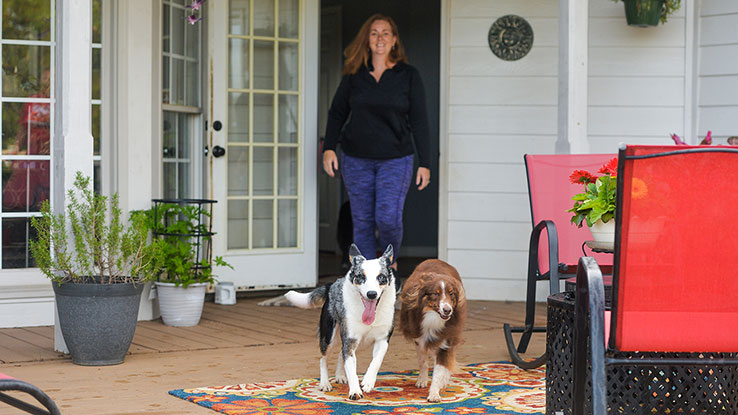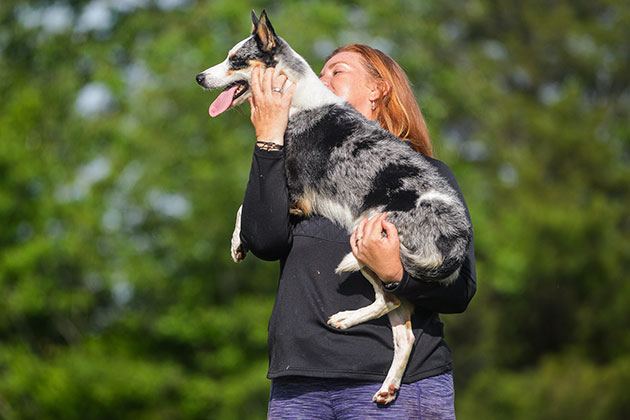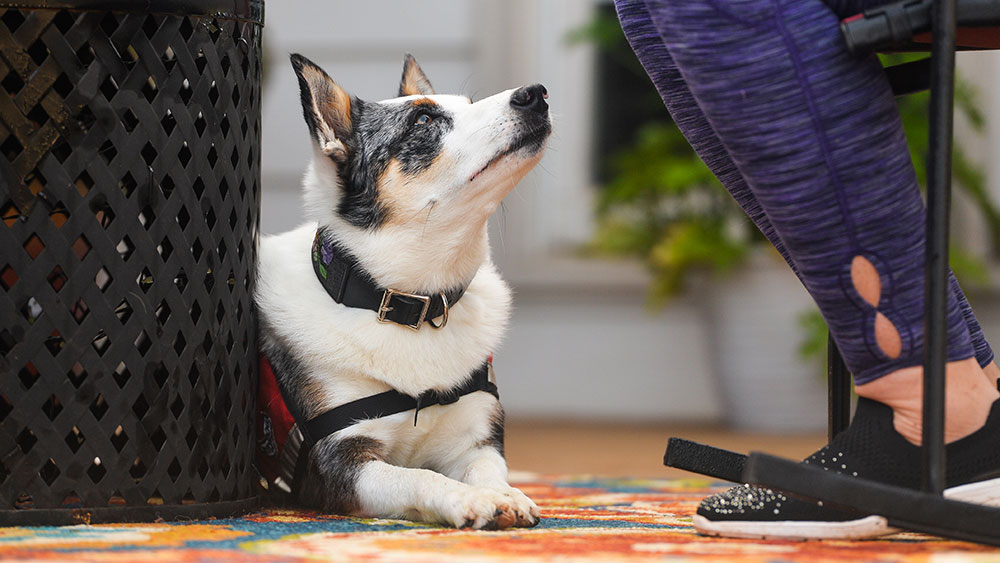Providing Assistance and Support for Epileptics
Epilepsy is a neurological disorder that can affect anyone of any age, race or sex. It is a disorder of the central nervous system in which the brain activity becomes abnormal and causes a seizure, which is a disruption of the electrical communication between neurons in the brain, or periods of unusual behavior, odd sensations or even a complete loss of awareness. According to the Center for Disease Control, 1 in 26 people will develop epilepsy at some point in their lifetime, and 3.4 million people have the disease in the United States, categorizing it as the fourth most common neurological disorder in the country. It is characterized by unpredictable seizures and can also cause a myriad of other health problems. Epilepsy is a spectrum condition with a wide range of seizure types. In approximately 50 percent of people with epilepsy, there is not an identifiable cause, which is known as Idiopathic Epilepsy. For the other half of cases, genetics, head trauma, infectious diseases or immune issues, developmental disorders or brain conditions, such as stroke or tumors, are correlating factors.
Dogs are uniquely capable of providing assistance and support to people with multiple health issues, including epilepsy. Seizure dogs are categorized in two ways: seizure response dogs and seizure alert dogs. A seizure response dog can be trained to respond to someone having a seizure. These kinds of seizure dogs tend to have a calm and gentle temperament and excellent “manners”— being well-versed and solidly trained in general basic obedience. There are organizations that breed and train seizure response dogs. These incredible animals often come with a hefty price tag — and a wait list. The cost of a seizure service dog can range up to $50,000, although depending on the organization, it is possible to apply for assistance and grants.
“It’s life changing to have a dog that can improve your very existence.”
— Theresa Musi-Brantly, World Champion in the Sport of Disc Dog, an Epileptic and Owner of Two Seizure Alert Dogs
Like other service dogs, training is demanding and long, as much as two years for full training. Those applying can expect to be on a wait list of several years. Some owners that have seizures, however, are able to train their own dogs to perform specific tasks to assist them during a seizure or do so with the help of a professional trainer. Although some individual dogs are better suited than others, seizure assistance can be trained by anyone who can train a service dog. Seizure service dogs can be taught to do several incredibly helpful interventions, including alerting when a seizure occurs, such as by barking, pulling a wheelchair, closing doors, retrieving medication, physically moving in a way that protects a person when having a seizure or activating an alarm like pressing a lever or pedal to sound the alert. Others learn to break the fall of a person having a seizure by putting their bodies in between the person and the floor or lying next to someone who is having the seizure to protect them from injury. They can provide emotional comfort and support by simply staying with the person until help arrives or the seizing individual is back to feeling normal.
A seizure alert or detection dog is different from a seizure response dog in that alert dogs have the ability to know when a seizure is about to occur. It is an innate skill that cannot be trained. A seizure alert dog, however, is also capable of being trained to be a response dog as well.

As natural biosensors, dogs are equipped with as many as 300 million fine-tuned olfactory receptors. It is estimated that the canine nose is up to 100 thousand times more perceptive than the human nose.
How are dogs able to predict seizures? Theories include subtle behavioral tells, abnormal heart rates or changes in brain waves, but it is most likely that dogs can smell oncoming seizures and pick up the very subtle chemical cues released around seizure activity. As natural biosensors, dogs are equipped with as many as 300 million fine-tuned olfactory receptors. It is estimated that the canine nose is up to 100 thousand times more perceptive than the human nose. Moreover, the canine brain can sort through the constant in-pouring of chemical data it receives and detect scent molecules in the parts per trillion range. From drugs to bombs to diseases, dogs can wade through and differentiate an immense spectrum of smells.
With this evolutionary superpower, dogs have been trained as scent detection dogs to specifically assist people using their noses. Dogs can identify common food allergens such as peanut, dairy and gluten and signal if something is contaminated. Each person also produces specific scents which scientists refer to as an individual’s “olfactory profile.” Swirling in the air around us, we release hundreds of scent compounds through sweat, breath and other secretions. Certain influencers like age, reproductive status and disease affect these chemical odors, and dogs are naturally able to pick up on these subtle changes.
Trained medical detection dogs are able to identify several types of cancers. They can sense anxiety and migraines, and they detect glycemic changes in diabetics. Seizure detection dogs may be able to use this remarkably keen scent recognition to know when a seizure is going to happen before it actually occurs. Some experts think epileptics may emit a specific chemical scent profile up to 45 minutes before seizing that dogs are able to pick up on. They may let owners know of an impending seizure by incessantly licking or barking. Others stare at their owner without interruption.


Theresa Musi-Brantly, who has epilepsy, can rely on two of her dogs to alert her of an oncoming seizure before it happens.
PHOTOS BY MAGGIE FAN
Anecdotally, seizure alert dogs consistently predict seizures before they happen. But the looming unanswered question is: How? With the variability in types of epilepsy and causes of seizures, the possibility of seizure-specific scent detection had previously stalled out, as it was thought that epilepsy—and the hallmark seizures that go with it — were too specific to the individual. A 2019 study, published in the journal Scientific Results, put to rest the debate of whether dogs are capable of smelling seizures and suggests they are highly accurate at doing so.
The research to investigate whether or not epileptic seizures can be smelled by dogs was carried out by Amélie Catala and her team from the University of Rennes in France. They paired up with the keen noses of dogs from Medical Mutts, an organization that trains service dogs based out of Indianapolis, Indiana. The scientists hypothesized that there would be a specific olfactory component general to all seizures. For the experiment, dozens of samples were taken from five patients with different forms of epilepsy and various types of seizures. Breath and sweat samples were collected during or immediately following seizure activity; others were taken during rest or after exercise — to test for potential sweat specificity. All the test dogs had prior disease detection training. For the trial, the dogs were trained to target seizure samples but were not trained on odors from the same patients as those used in the trial. The scents in the trials were novel. Each dog performed a total of nine trials. For each trial, seven separate scent samples were distributed in steel cans throughout a room. The odorous samples included two from the exercise sessions, four from rest days and one that had the seizure-specific odor. The dogs were trained to signal a “response behavior” when they detected the smell of a seizure; that was to stop and stand still at the can that contained the target smell. They had five minutes to perform the task, although all of the dogs finished each task well under the allotted time. All dogs flagged the seizure odor. Three of the dogs scored perfect 100 percent accuracy for all nine tests. The other two dogs still had 67 percent sensitivity and 95 percent specificity — their ability to identify negatives or non-epilepsy samples. The study’s outcome supports the idea that there is a seizure-specific odor regardless of seizure type or natural body odor of the person in different lifestyle contexts. This preliminary study on seizure dogs creates exciting possibilities and supports the need for continued research.
Seizure alert dogs are able to warn owners of imminent seizure activity, allowing epileptics time for vagus nerve stimulation, to take medication, seek help, lie down to avoid injury or find a safe place. For children, a detection dog can alert and prepare parents or caregivers that seizure activity may occur. These amazing animals allow epileptics to know — rather than guess — when a seizure is about to happen, offering independence, stress relief and better quality of life. All seizure service dogs give peace of mind to the people they love, another selfless gift from man’s best friend.

When an imminent seizure is detected, a seizure alert dog will exhibit changes in typical behavior, such as close eye contact, pawing, incessant barking, circling, pacing, licking, whining or acting restlessly.
Seizure Response Dogs vs. Seizure Alert Dogs
Seizure Response Dog
Job: Provides assistance during or immediately following a seizure.
Special Skills: Responds to someone having a seizure in a variety of ways which may include:
- Acting as an alarm system by barking or activating an alarm device, alerting others that someone is having a seizure
- Breaking a fall at the onset of a seizure by placing body between owner and floor
- Preventing injury by lying next to someone having a seizure
- Providing emotional support and comfort
- Retrieving a phone, alert device or medication
- Providing physical assistance by helping a person get up and help navigate to a safe location
- Helping with post-seizure disorientation by blocking unsafe places like stairs while a person re-acclimates
Common Breeds: Medium to large breeds generally preferred to be able to offer physical assistance if needed — Labrador Retrievers, Golden Retrievers, Border Collies, German Shepherds, Poodles, Newfoundlands and mixes of these breeds like Labradoodles are common but not exclusive.
Character Traits: Calm disposition, well-behaved, alert, responsive, focused
How to Train: Variable and typically tailored to the individual owner or client. All formal seizure service dogs are trained in basic obedience, then taught specific tasks to assist during or after a seizure.
Training Requirements: Unregulated, although most non-profit organizations that train seizure service dogs have a minimum number of training hours and a set list of task requirements. Some owners train their personal dogs as well.
Length of Training: Dependent on tasks being taught, can take up to 24 months of basic obedience and advanced service dog skill training.
Career Length: Seizure service dogs generally work for about 8 to 9 years.
Seizure Alert Dog
Double Duty: A seizure alert dog may also have the same traits and skills as a seizure response dog.
Special Skills: Natural ability to detect seizures and alert before a seizure occurs.
Why is This Awesome: By alerting that a seizure is imminent, owners are able to take precautions, such as leaving a crowded environment, finding a safe place or are able to lie down and avoid injury.
Alerting Behaviors: Exhibits changes in typical behavior, such as close eye contact, pawing, incessant barking, circling or pacing, licking, whining, acting restlessly.
How to Train: The ability to detect seizures is innate and cannot be trained. However, some experts suggest that if a dog has the natural ability to alert, it can be encouraged and refined through positive reinforcement training.
Common Demographics: Not age, gender or breed specific, however, alerting behavior is sometimes seen in breeds with formal seizure response training.
Did You Know?
Some seizure response dogs may develop or spontaneously display the ability to detect seizures, particularly after spending an extended amount of time with their owner.
A 2008 survey of dog owners with epilepsy responded that 59 percent of their formally-trained seizure response dogs showed alerting behaviors. This is not uncommon anecdotally, especially in instances when the dog is bonded with the owner and they have been together for years.
Reference: Kirton A, A Winter, E Wirrell, O C Snead.
Seizure response dogs: Evaluation of a formal training program.
Epilepsy Behav. 2008 Oct;13(3):499-504.
https://pubmed.ncbi.nlm.nih.gov/18595778/

by Emily Smith, MS,
Platinum Performance®

